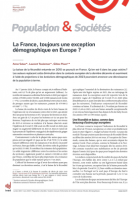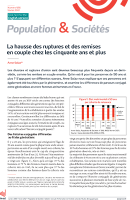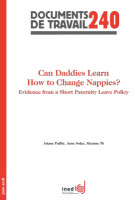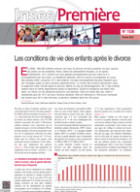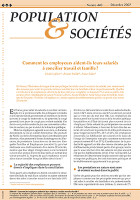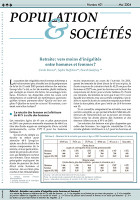
Do late-life divorces produce greater gender inequalities? Evidence from administrative data
Collection : Documents de travail
n° 292, 2024, 49 pages
Though the number of divorces has stabilized in several European countries at prime age, it continues to increase at older ages. Drawing upon a large French administrative database, the Echantillon Démographique Permanent (Permanent Demographic Sample), a panel study that follows 4.4% of the French population every year, this paper presents new findings on the economic consequences of grey divorces, occurring at age 50 and over. We implement a two-way fixed-effect regression with a control group to assess the causal effects of divorce on men and women. To do so, we compare divorced individuals with people that will divorce but have not done so yet. The results confirm that the decrease in living standards is larger, on average, for women than for men. For the former, this decrease is larger when divorce occurs after 50 (24% one year after the divorce) than before (18%). Thus, grey divorce increases gender inequalities following break-ups. Public and private transfers mitigate post-grey divorce gender inequalities, especially for the poorest women. Recovery through re-partnering plays an important role in moderating the negative consequences of divorce.



